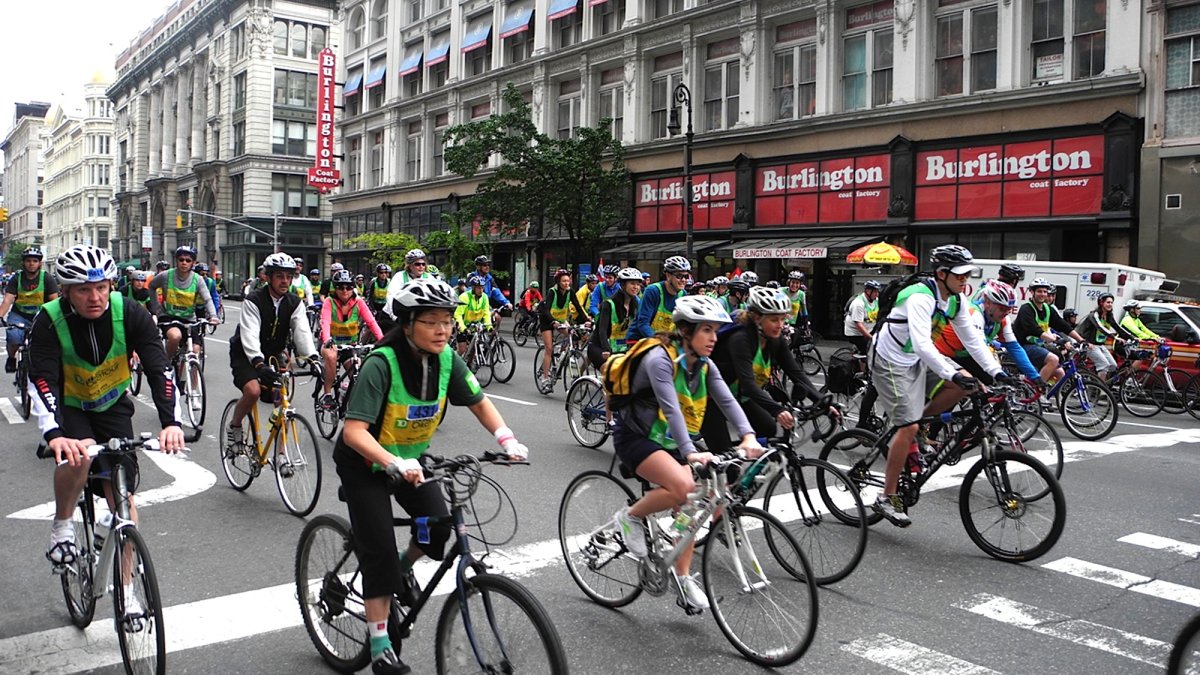
Thousands of cyclists ride the streets of NYC every day. NBC New York’s Linda Gaudino chats with Bike New York on what’s next concerning bike safety and possible benefits of congestion pricing.
What to Know
- NYC Dept. of Transportation (DOT) revealed dozens of new projects to improve bike and bus lanes.
- The MTA manages the city's congestion pricing plans and estimates a profit of $15 billion to go towards funding long-term initiatives.
- Plans like widening bike lanes, installing bike parking areas and creating protected bike lanes linking Manhattan's central business district are on the table.
The New York City Department of Transportation (DOT) revealed dozens of new projects to improve bike and bus lanes, using the expected boost in cash from congestion pricing.
Under the upcoming plan set to launch June 30, drivers will be charged an additional $15 to enter Manhattan at 60th Street and below, while trucks could be charged between $24 and $36, depending on size.
The Metropolitan Transportation Authority (MTA) manages the city's congestion pricing plans and estimates a profit of $15 billion to go towards funding long-term initiatives throughout the boroughs.
"Congestion pricing will reduce traffic, improve air quality in our communities, and raise critical funding for our subways and buses," said NYC DOT Commissioner Ydanis Rodriguez. "We have been preparing for this moment for over a decade, and with fewer cars entering the tolled zone, we can repurpose street space to make commuting by bus, bike, or on foot safer, faster, and more reliable.
The DOT released a new report “Connecting to the Core” featuring over 40 ongoing bike, bus and pedestrian enhancements since 2019, as well as introducing dozens of fresh proposals.
Get Tri-state area news and weather forecasts to your inbox. Sign up for NBC New York newsletters.
Widening bike lanes, installing bike parking areas and creating protected bike lanes linking Manhattan's central business district are plans on the table.
News
The proposals include a redesign of the Delancey Street central median and building a two-way protected bike lane from the foot of the Williamsburg Bridge to Allen Street. There is also a plan to convert the Queensboro Bridge's roadways into two separate options: a solely pedestrian walkway and a bike-only path.
"We have an opportunity with congestion pricing to reimagine the way the city streets look south of 60th street," said Ken Podziba, Bike New York CEO, to News 4.
Bus priority projects consist of improving bus speeds, reliability and rider experience for people traveling to or within the central business district, based on the report.
This year, the DOT will initiate a community planning effort to find a better solution for managing traffic on 34th Street to combat the slow 4-5 mph bus speeds that are averaged during weekday peak periods.
Another project is the Flatbush Avenue Bus Priority, which hopes to connect bus riders to 10 subway lines and enhance bus service for more than 133,000 daily bus riders across 12 bus routes, according to the report.